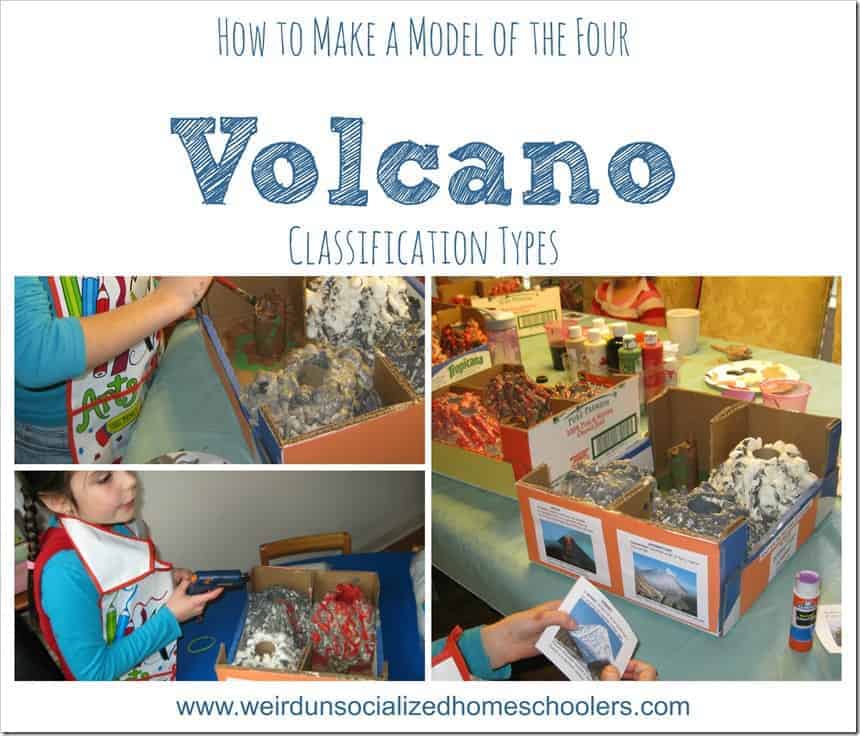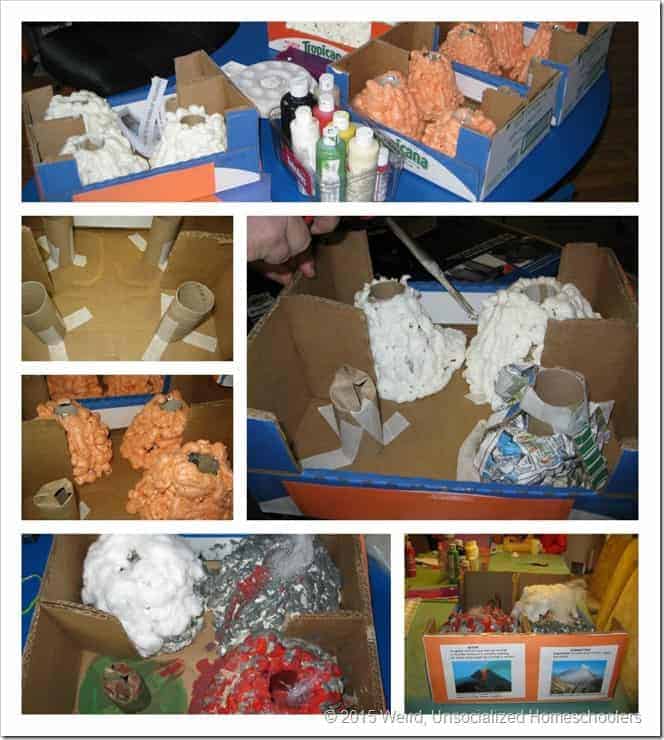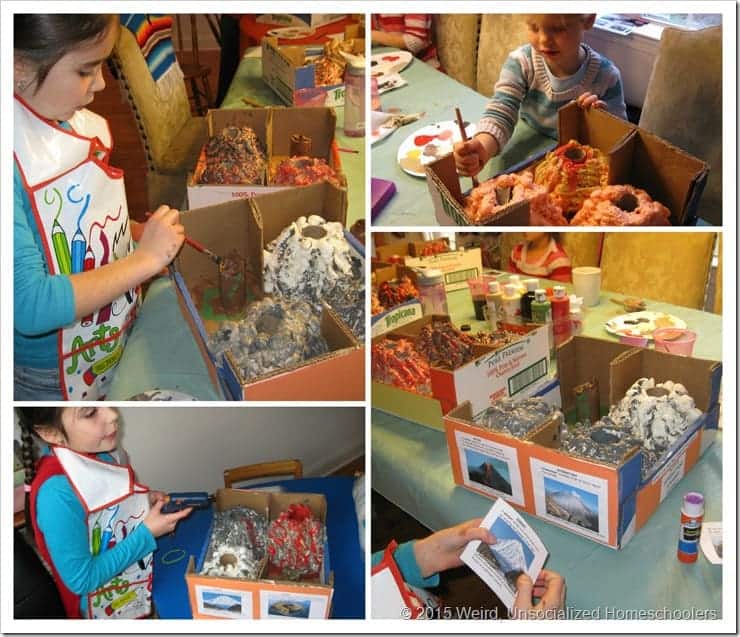How to Make a Volcano Model of the 4 Classification Types
Volcanoes tend to be a high-interest topic for kids. This project, which requires adult assistance to complete, shows how to make a volcano model and provides a great visual reference of the four main types of volcanoes as classified by how often they erupt – active, intermittent, dormant, and extinct. We had lots of fun making them!

Before we start making a volcano, let’s take a moment to watch some information about how volcanoes work.
How to Make a Volcano Model
You will need the following supplies:
- Cardboard box at least 24″x24″ with two sides in tact
- Construction paper
- Pre-printed photos of four classification types of volcanoes and definitions (I found real photos of each type to use for ours. This slideshare gives you specific classification types and names if you want to do that. )
- Four cardboard toilet paper rolls
- Tape
- Newspaper
- Spray foam
- Paint and paint brushes (red, black, brown, green white)
- Batting or cotton balls
- Hot glue gun
Step 1: Take your clean cardboard box and evenly space out your four cardboard toilet paper rolls so they are standing length up in the square (as picture shows). Tape them in place.
Step 2: Scrunch up your newspaper and place it around the base of your toilet paper roll thicker, then thinner as you work towards the top. Lightly tape it into place. This will become the “form” for you to spray your foam onto to make the volcano.

Step 3: In a well ventilated area, take your spray foam and, beginning at the base of the volcano form, begin to spray, going upwards in direction and then working across until you encircle the entire form.
You can go back and fill in any areas that may need it or add some extra foam until you get the form you want for you volcano. You will do this for 3 of the volcanoes. For the fourth, leave the toilet paper roll the way it is and push down on the toilet paper roll top until it folds into itself (like the photo shown). This will become your extinct volcano. Let dry for a few hours or overnight.

Step 4: Taking your paints, explain the four types of volcanoes and what each will look like, giving the child suggestions for how to paint and embellish each type. Have her begin by painting all of the volcanoes brown or grey. Then add distinctive features.
For example an active volcano will have lots of red-hot lava flowing down it and some smoke billowing out of it. For this you will use the batting, pulled out and made into “smoke” and then hot glued on the mouth of the volcano when your child is finished painting it.
The inactive volcano may have snow covered caps which can be created using batting or cotton balls. The extinct volcano may be painted with some green for grass, since it will be grown over and no longer active. Have your children paint the outside of each volcano accordingly.

Step 5: Lastly, take your volcano forms box and cut out some construction paper to cover the box’s writing and to serve as a background for your printed materials. Glue the photos of the volcano types on the box so that each one represents the volcano type that is inside the box. (Remember that the extinct volcano is the toilet paper roll you pushed in that has no foam on it, so have the child label that one accordingly).
Now you have a fantastic 3D, labeled display of the four classification types of volcanoes! Enjoy!
Volcano Books
Here are some books that you might want to use to expand your volcano study!
This article was written by a Weird, Unsocialized Homeschoolers guest author. See the author's full bio in the body of the post.






Wow!! This looks super fun. I can’t wait to try it with my kids.
that looks great fun thanks for sharing